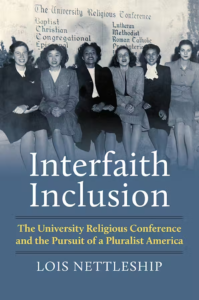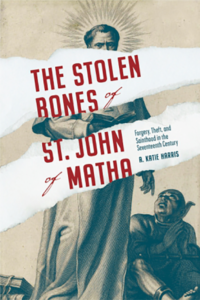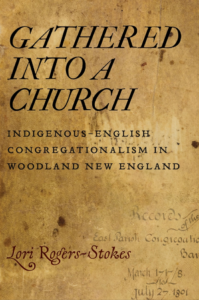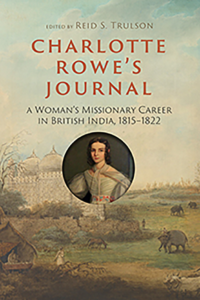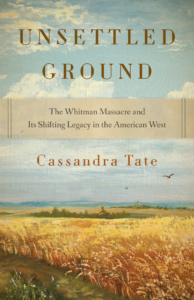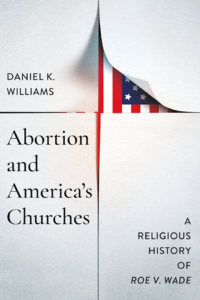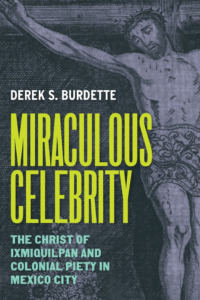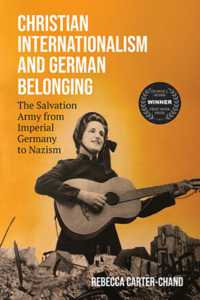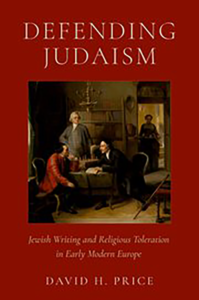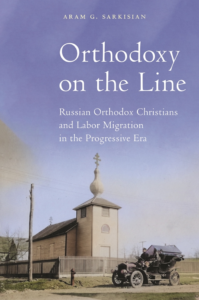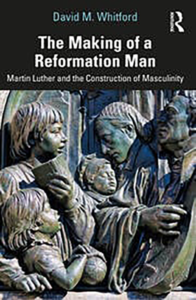Monthly Updates on Recent Books in the History of Christianity
To raise awareness of recent books in the history of Christianity, the editorial staff of Church History: Studies in Christianity and Culture highlights each month a list of 10-15 books in diverse periods and geographical regions that we hope will be of interest to our members. We include here below the October 2025 list, chosen by our staff, with excerpts from the publishers’ blurbs.
Lois E. Nettleship, Interfaith Inclusion: The University Religious Conference and the Pursuit of a Pluralist America, 2025
A story of pioneering students who brought together Americans of all faiths to embrace their differences, improve civil discourse, and work for the betterment of society. An inspiring model for activists, organizers, and educators seeking middle ground in a polarized world.
Interfaith Inclusion tells the almost-forgotten story of the University Religious Conference (URC) and the students who sought to expand the circle of inclusion in the United States. The URC was a multifaith student organization that began in 1928, functioning primarily at UCLA. It started out by reaching across religious lines and expanded to reaching across ethnic and racial lines as well.
Lois E. Nettleship begins with the origins of the group in the policies that the US War Department put in place in the First World War to build a sense of unity and inclusion among recruits of different religions. Following the war, O. D. Foster, a Congregational minister and YMCA worker in the US Army camps, applied these inclusive values to public higher education. He and others who shared his vision created the URC, which went on to create similar organizations at other universities across the nation. The URC carried out projects designed to bring students of different religious, racial, and ethnic backgrounds together and to demonstrate to the public that all of them, however different they might appear, were Americans who shared many common values.
In the 1950s these projects, religious and secular, became a model for other organizations. The URC pioneered student summer trips to India that exposed them to new religions and became a model for the Peace Corps. Soon thereafter the New York City Public School System used the URC model of acceptance, led by former URC participants, to train teachers, counselors, and pupils in how to demonstrate similar kinship among diverse groups in the city. Nettleship argues that building inclusion was the work not only of prominent politicians, religious leaders, and others in the spotlight, but also of students, amateurs, and volunteers with a practical bent and a sense of civic duty.
Interfaith Inclusion resurrects one of the earliest efforts in the United States to develop a diverse movement for the purpose of improving civil discourse and embracing difference. Nettleship’s story of how liberal Protestants, Catholics, and Jews sought to work together to better society is particularly relevant today in a time of religious strife, division, and political polarization. Contemporary inclusive activists and educators likely have never heard of the URC, but they are continuing its legacy.
A. Katie Harris, The Stolen Bones of St. John of Matha: Forgery, Theft, and Sainthood in the Seventeenth Century, 2025
On the night of March 18, 1655, two Spanish friars broke into a church to steal the bones of the founder of their religious institution, the Order of the Most Holy Trinity. This book investigates this little-known incident of relic theft and the lengthy legal case that followed, together with the larger questions that surround the remains of saints in seventeenth-century Catholic Europe.
Drawing on a wealth of manuscript and print sources from the era, A. Katie Harris uses the case of St. John of Matha’s stolen remains to explore the roles played by saints’ relics, the anxieties invested in them, their cultural meanings, and the changing modes of thought with which early modern Catholics approached them. While in theory a relic’s authenticity and identity might be proved by supernatural evidence, in practice early modern Church authorities often reached for proofs grounded in the material, human world—preferences that were representative of the standardizing and streamlining of sixteenth- and seventeenth-century saint-making. Harris examines how Matha’s advocates deployed material and documentary proofs, locating them within a framework of Scholastic concepts of individuation, identity, change, and persistence, and applying moral certainty to accommodate the inherent uncertainty of human evidence and relic knowledge.
Engaging and accessible, The Stolen Bones of St. John of Matha raises an array of important questions surrounding relic identity and authenticity in seventeenth-century Europe. It will be of interest to students, scholars, and casual readers interested in European history, religious history, material culture, and Renaissance studies.
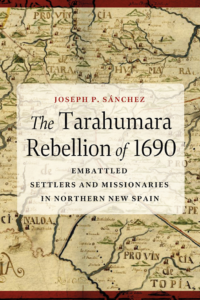
Joseph P. Sánchez, The Tarahumara Rebellion of 1690: Embattled Settlers and Missionaries in Northern New Spain, 2025
The Tarahumara Rebellion of 1690 examines a seventeenth-century Indigenous uprising in northern Mexico aimed at driving out Spanish miners, missionaries, and settlers from Tarahumara (Rarámuri) and Tepehuanes homelands.
Previous histories have interpreted this revolt, and other borderlands uprisings, as localized and spontaneous events aimed at rectifying specific grievances. Historian Joseph P. Sánchez argues that the revolts of the Tepehuanes and the Tarahumaras in northern New Spain, or Nueva Vizcaya, were well-planned, inspired by outside events, and drew in multiple communities and ethnicities. Drawing on a wealth of primary sources, including Jesuit accounts and archival documents, Sánchez offers a comprehensive narrative that challenges conventional interpretations of colonial Mexican uprisings.
Far from localized, the Indigenous rebellions in the northern Mexican borderlands during the colonial period were part of the overall Indigenous struggle for defense of homeland throughout the Americas. The Tarahumara Rebellion of 1690 brings together a rich history of localized events and broader historical trends and offers a compelling narrative that enriches our understanding of the colonial experience in northern New Spain.
Lori Rogers-Stokes, Gathered into a Church: Indigenous-English Congregationalism in Woodland New England, 2025
University of Massachusetts Press
Puritans in the American colonies created Congregationalism, a Protestant denomination where power rested in each congregation rather than a larger central body. As has often been told, the official Puritan mission included outreach to Indigenous people. This may appear as nothing more than forced conversion under colonization, but church records from Massachusetts—digitized and made public for the first time—reveal the authenticity of this Indigenous religious experience, as evidenced by commonalities between the Congregational way and some aspects of local Native American cultures. The records also show how the decentralized churches stood in contrast to a growing civil government in the colonies.
Lori Rogers-Stokes focuses on the Massachusetts Bay Colony during the decades around the turn of the eighteenth century, a period bookended by King Philip’s War and the First Great Awakening. She uses as her primary source the many records kept by individual Congregational churches of the time. These records, accumulated over generations, have been missing from the historical record, allowing overly simplistic accounts of this religious community to circulate. With church records now available, Rogers-Stokes reveals a more realistic picture of diverse congregations and contrasts their internal workings—which show inherent flexibility and a focus on a shared creation of community—with a developing civil government focused on consolidating power around white landowners. The result is a story that can expand how scholars write about this period, this region, and these communities, both settler and Indigenous.
Reid S. Trulson, ed. Charlotte Rowe’s Journal: A Woman’s Missionary Career in British India, 1815-1822, 2025
America's first appointed woman missionary kept a journal recording her experiences in a multi-ethnic, multi-lingual, religiously pluralistic world. Charlotte Atlee White Rowe's 1815-1822 journal recounts her cross-cultural work among Hindus, Muslims, Eurasians, and Europeans in British India. Most of her entries come from her first years and reveal a ministry being shaped by experience and reflection. Charlotte's picture of life along the Hooghly and Ganges rivers includes temple ceremonies, funeral pyres, child marriage, palanquins, food, climate, snakes, schools, clothing and the lack thereof. She observes colleagues like William Carey working in settings impacted by both the Indian caste and the British class systems. While some entries were intended for the public, her journal was also her private diary. In it she confided intimate thoughts and challenges unique to a woman missionary at the start of the modern missionary movement. Revealing that gender bias had delayed her from acting on her call to ministry for nine years, Charlotte's entries contain nuanced thoughts on gender, women in ministry, and the liberation of girls and women through education. They reveal a strong woman in dialogue with herself and God while remaining confident about her call to public ministry. This newly located journal was unavailable to previous researchers and this transcription preserves the journal's original character. Annotations identify people, places, and events, offer context regarding British India, and define archaic vocabulary. An introduction and conclusion sketch her life before and after India. It is a remarkable addition to mission, women's, and Baptist studies.
Cassandra Tate, Unsettled Ground: The Whitman Massacre and Its Shifting Legacy in the American West, 2025
University of Washington Press
In this rigorously researched and incisively written account, historian and journalist Cassandra Tate challenges generations of received wisdom about the 1847 killing of Marcus and Narcissa Whitman and eleven others at their Presbyterian mission on Cayuse land near present-day Walla Walla.
Far from a simple story of martyrdom and savagery, the Whitman incident emerges here as a cultural collision steeped in misunderstanding, religious idealism, and colonial arrogance. Tate deftly navigates the evolving narratives that have surrounded the event—from nineteenth-century sanctification to twentieth-century critique—revealing how shifting social values have shaped public memory. With nuance and clarity, she illuminates voices long suppressed, particularly those of the Cayuse, whose perspectives refract the complexities of resistance, sovereignty, and survival.
Tate’s portrait of the Whitmans is neither hagiography nor vilification. Instead, it captures them as earnest but flawed agents of Manifest Destiny, shaped as much by their cultural assumptions as by their religious convictions. Through fresh archival research and a deep sensitivity to context, Unsettled Ground unpacks the politics of commemoration and historical narrative, offering a compelling, unvarnished retelling that is as relevant as it is revelatory. This is essential reading for anyone interested in the contested ground of Western history.
Daniel K. Williams, Abortion and America's Churches: A Religious History of "Roe v. Wade", 2025
Many people assume that Christians have steadfastly condemned abortion throughout the United States’s history. Daniel K. Williams overthrows all assumptions about the unity, consistency, or simplicity of American Christian thought and belief in this groundbreaking new book. He demonstrates that churches in the United States have fought among themselves and with the wider culture as they developed and enforced their stance on abortion, revealing major struggles to define their often-changing positions. Far from a cynical exercise of political interest, changes and disagreements arose from serious theological considerations informed by each tradition’s approach to the faith. These theological shifts—and corresponding shifts in interreligious political alliances—led to the changing fortunes of Roe v. Wade.
By capturing the fascinating and complicated history informing each faith’s position, Abortion and America’s Churches restores much-needed context to the sharp polarization over abortion today.
Derek S. Burdette, Miraculous Celebrity: The Christ of Ixmiquilpan and Colonial Piety in Mexico City, 2025
The life-sized crucifix known as the Christ of Ixmiquilpan (also the Señor de Santa Teresa) was one of the most important artworks in colonial Mexico. The statue began as an ordinary devotional image, but in 1621 devotees witnessed it undergo a miraculous renovation that gave it a supernatural beauty. Over the next two and half centuries, its perceived power increased until it was surpassed in importance only by the Virgin of Guadalupe. Despite its historical significance, the Christ of Ixmiquilpan’s history has yet to be fully told.
Derek Burdette brings the miraculous crucifix out of the shadows and explores its instrumental role in shaping the devotional culture of New Spain. Following the arc of the statue’s life, he chronicles the story of the statue’s creation, miraculous renovation, and subsequent veneration at the heart of Mexico City. He also reveals how colonial politics were woven into the statue’s life from the very start. Reconstructing the history of a key artwork, Miraculous Celebrity sheds new light on the intersection of art, faith, and politics in the Spanish colonial world.
Rebecca Carter-Chand, Christian Internationalism and German Belonging: The Salvation Army from Imperial Germany to Nazism, 2025
Ever since the Salvation Army, a British Protestant social welfare organization, arrived in Germany in 1886, it has navigated overlapping national and international identities. After existing on the margins of the German religious landscape while solidifying its role as a social service provider, the Salvation Army proactively shaped its public profile during the Nazi rise to power. Accepted into the Nazi Volksgemeinschaft (ethnonational community) and made an auxiliary member of the National Socialist People’s Welfare (NSV), the organization continued limited operations throughout the Nazi period before returning to its international affiliations in the immediate postwar period, thereby bypassing denazification and rehabilitating its reputation.
In this groundbreaking reevaluation, Rebecca Carter-Chand argues that the Salvation Army was able to emphasize different aspects of its identity to bolster and repair its reputation as needed in varied political contexts, highlighting the variability of Nazi practices of inclusion and exclusion. In that way, the organization was similar to other Christian groups in Germany. Counter to common hypotheses that minority religious groups are more likely to show empathy to other minorities, dynamics within Nazi Germany reveal that many religious minorities sought acceptance from the state in an effort to secure self-preservation.
David H. Price, Defending Judaism: Jewish Writing and Religious Toleration in Early Modern Europe, 2025
An in-depth consideration of Jewish-Christian relationships and connections that changed the nature of European society. Provides an understanding of the decisive contributions of Jewish writers to the expansion of religious toleration during the period 1600-1789. Recognizes the contributions of Jewish intellectuals toward concepts of human rights and toleration that still guide society's better angels.
Aram G. Sarkisian, Orthodoxy on the Line: Russian Orthodox Christians and Labor Migration in the Progressive Era, 2025
At the turn of the twentieth century, thousands of immigrants from the borderlands of the Russian and Austro-Hungarian Empires built a transnational church in North America. The community that church leaders called American Orthodox Rus’ was created by and for working people, and transformed believers’ identities as Eastern European migrants, as Orthodox Christians, and as American workers.
Given how strongly the Russian Orthodox Christian community was tied to working class industrial life, this book makes the case that we cannot understand the scope of working class and immigrant religion in the United States without understanding American Orthodox Rus’. The work Russian Orthodox immigrants did in the Progressive Era United States occurred in factories, foundries, and mines; they lived mainly in industrial cities and mining towns; and they almost immediately got caught up in the most pivotal—and sometimes violent—political and social crises of their times, both nationally and internationally. To address their needs in these contexts, the Russian Orthodox Church expanded its missionary efforts in North America, forming a network of social and material aid for working-class believers. This book traces the rapid growth of this transnational religious world, then explores its unexpected collapse under the weight of the First World War, a global pandemic, and the transnational reach of revolutionary political change in Russia. A story of challenge and resilience, Orthodoxy on the Line complicates dominant paradigms in the study of labor and North American Religions.
David M. Whitford, The Making of a Reformation Man: Martin Luther and the Construction of Masculinity, 2025
This volume explores how Martin Luther’s life and teachings reshaped and redefined masculinity during the Reformation, offering a more nuanced portrayal of him as a man grappling with the complexities of fatherhood, marriage, and the battlegrounds of religious controversy.
This book demonstrates how Luther forged a new ideal of Christian manhood by examining his struggles with monastic vows, his transformation of the household as a spiritual center, and his reshaping of male authority. Integrating insights from cultural historians, gender studies, and feminist scholarship, Whitford analyzes the intersections of gender, power, and religion during a time of profound social upheaval and change. Through Luther’s personal transformation, this book reveals how early Protestant ideals of masculinity were intricately tied to broader religious, political, and cultural changes that reshaped Europe. By placing Luther within the wider context of religious and social transformation, this work offers a fresh perspective on his impact and the changing notions of masculinity in the early modern period.
The Making of a Reformation Man is a valuable resource for scholars and students of the Reformations and gender theory, as well as readers interested in the broader implications of religious thought on societal roles and identity.
Finally, for staying up-to-date on the latest titles in all fields, we recommend regularly perusing New Books Network and its "New Books in Christian Studies” page. These pages are updated regularly.

